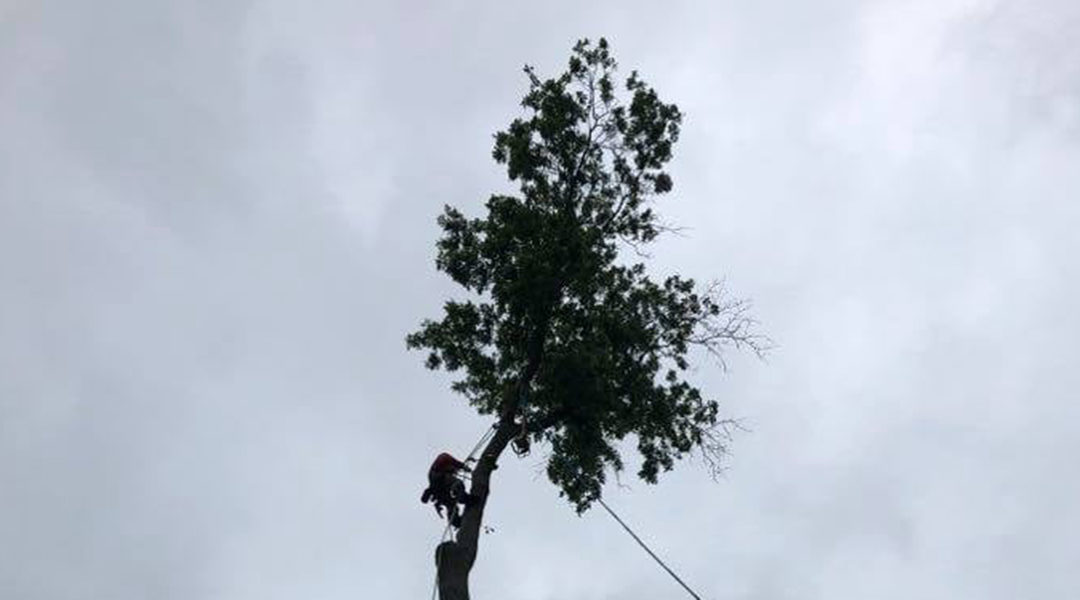Rain on trees is essential for their health and maintenance. Water is necessary for any cell processed within any tree species. However, there can be too much of a good thing, especially during the rainy season.
In this post, Dos Amigos Tree Experts, your trusted tree service company in Falls Church, VA, explores the negative effect of too much water for your trees.
Weak Roots
Rain on trees filters down to the root systems before trickling into the water table. How quickly this water drains away plays a significant role in your tree’s health. Water-logged soil makes it difficult for the roots to maintain their grip, increasing the risk of toppling.
This is a particular danger when gale-force winds strike as the ground is too soft to properly secure the roots.
Fewer Nutrients and Less Oxygen
Too much water can wash away valuable nitrate particles or acidic particles the tree needs to thrive. However, there is worse in store.
The water displaces the oxygen in the soil, so the roots cannot access nutrients or air. Within five hours, the tree has no oxygen reserves left.
It then goes into emergency mode to preserve energy, so photosynthesis stops. The tree must use its starch reserves to survive.
It can do so if the water clears within a few days. If it does not, the roots die.
Root Rot
Native species are more likely to withstand the effects of excessive rain on trees because they adapt to climatic conditions. However, when the soil is saturated for too long, the water attacks the roots, softening them and leaving them vulnerable to root rot and fungal infections.
If more than a quarter of the root system becomes infected, the tree is unlikely to survive. We recommend calling us as soon as you suspect an issue so that we can rectify the situation. We will cut back the infected roots carefully and dry out the soil in between, allowing the tree to breathe.
Powdery Mildew
One of the benefits of trees is the ample shade their lush canopies provide. However, this benefit becomes a risk when there is too much rain on trees. If the leaves cannot dry out properly between showers, they are prone to fungal infections.
Powdery Mildew is one of the most common and pernicious of these fungi. It causes powdery patches ranging from grey to white in color. You’ll see these “blooms” on the stems, buds, and leaves of the infected plant.
The danger is that the mildew spreads quickly due to the spores that it sends out, so you need to act rapidly. Pruning away the infected tissue is crucial. However, it may be necessary to prune other branches as well to improve air circulation.
The best way to treat your tree, in this case, is to call professionals. They can inspect your tree and determine the best treatment method.
What Proactive Steps Can You Take?
Start with ensuring your ground drains well and work in organic compost and other elements to keep the soil friable. After a storm, perform an inspection of your trees and ask the following questions:
- Did the water drain off properly?
- Are any roots exposed?
- Is the tree slanting?
- Can you see any damage, like cracks?
If you suspect that there is an issue, contact an arborist immediately to potentially save the tree.
Contact Your Trusted Team Today!
The effects of excessive rain on trees are manageable with expert advice and good maintenance. Contact our team at Dos Amigos Tree Experts at (703) 300-6103 to arrange a formal inspection and learn more about how to take care of trees in Falls Church, VA.


